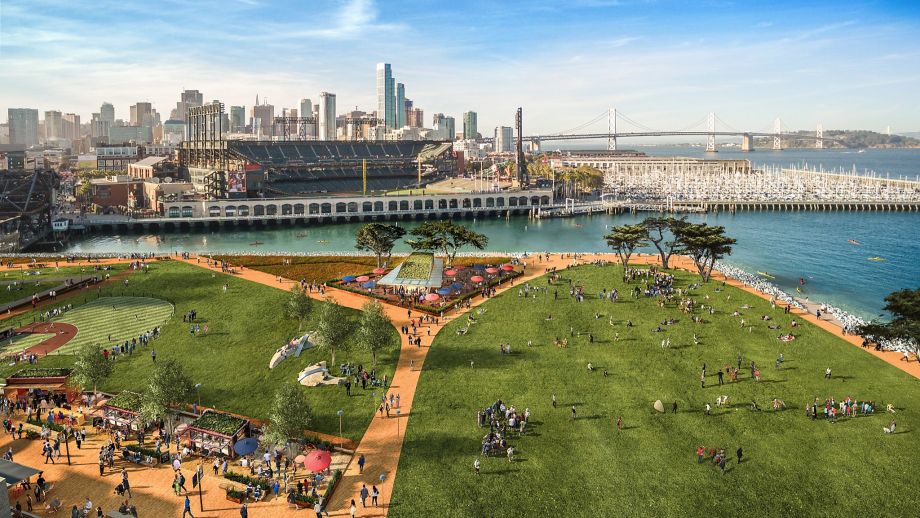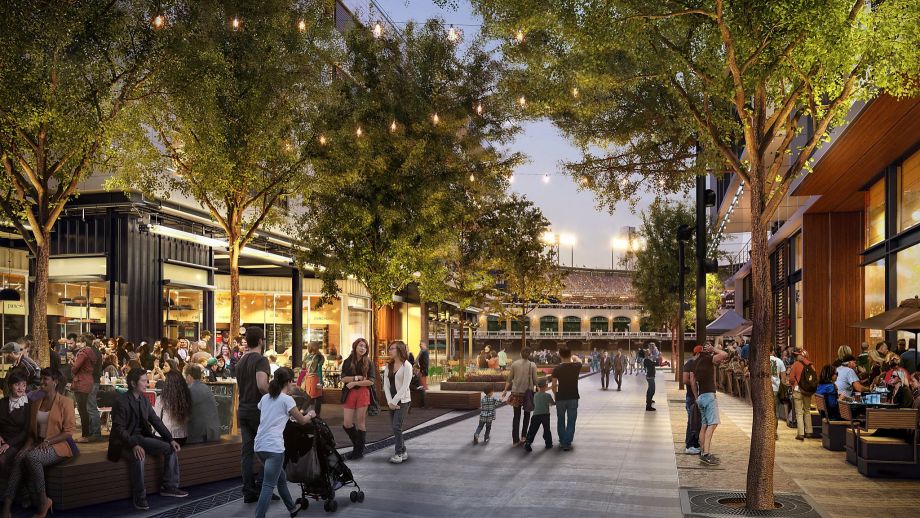The San Francisco Giants are proposing a mixed-use development next to AT&T Park that would include retail, affordable housing, a new Anchor Steam brewery, 1.5 million square feet of commercial space and eight acres of parkland.
The proposal isn’t surprising: the Giants have long been planning for development next to the ballpark on surface lots currently used for parking — some 2,200 spots near McCovey Cove, across from AT&T Park on what is now Giants Parking Lot A, as a matter of fact. But the specifics of the progress have changed over time, with the addition of more affordable housing (up to 33 percent of the project) and lower-slung buildings. Pier 48 will be renovated to become the expanded home for Anchor Brewing, San Francisco’s oldest and largest manufacturing business. It will also open a public boardwalk with dramatic water and bridge views around the historic pier.
“The Mission Rock Initiative is the culmination of eight years of extensive neighborhood outreach and community planning to transform this surface parking lot into an asset for the community,” said Giants President and CEO Larry Baer. “We are eager to engage with San Francisco voters to share our community’s vision of open access along the waterfront, new jobs, neighborhood serving retail, new parks and an unprecedented level of affordable housing.”
From the San Francisco Chronicle:
“Our first objective was that this project be an asset to the neighborhood,” said Jack Bair, general counsel and senior vice president for the Giants. “The whole neighborhood planning process didn’t focus on the Giants fan. It focused on the neighbor and what they wanted to see.”
The open space will include a five-acre waterfront green space as well as a more intimate “town square”-type park that will be ringed with residential buildings and retail. The Giants will create a community benefits district to maintain the park privately, according to Baer. He said the open space will be an important part of the Giants’ fan experience, giving families a place to picnic or throw a baseball around before or after games.
“It’s super-important for us that this be a well-maintained, pristine environment as people come to and from games,” Baer said.
The project would create 13,500 construction jobs and 11,000 permanent jobs, including blue-collar jobs at Anchor Steam and those created by the offering of below-market rents for nonprofit and arts organizations and dedicated space for small local manufacturing businesses along a waterfront “Maker’s Row.” Some specifics from a press release issued by the team:
The Mission Rock plan was developed over the last eight years through an extensive community planning process. The project carefully balances parks and public amenities with economic uses that address important city priorities. New buildings are proposed on only 10 acres of the 28-acre site, with height limits ranging from 90 to 190 feet for office and retail uses and 120 to 240 feet for rental housing, with a minimum of 33% of the units dedicated as affordable housing. No buildings will be built within 100 feet of the Bay and building heights will step down as they get closer to the water.
The project is expected to generate more than $1 billion in much-needed revenue for the City and County of San Francisco to fund parks and essential city services such as schools, police, health care and transit. The project provides more than $100 million in up-front development fees to the City and more than $25 million each year in taxes….
The Giants submitted the Mission Rock measure to the City Attorney’s Office today and will soon begin a signature drive. The measure needs 9,702 signatures of San Francisco voters before July 6, 2015 to qualify for the November ballot. The Mission Rock initiative puts the project in compliance with the Proposition B measure that was approved by voters in 2014.
One thing that should appeal to San Francisco voters, who can be a little prickly when it comes to waterfront development: the whole project is built around transit, whether it be Silicon Valley types taking the train to the ballpark or locals



